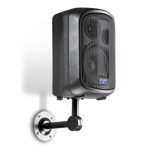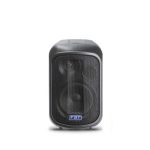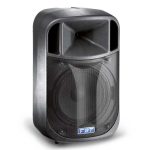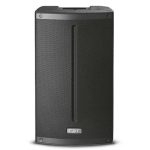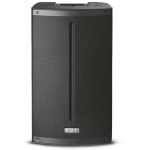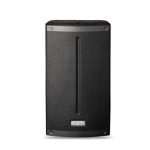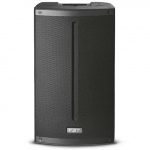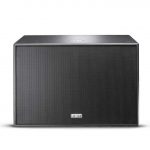The Importance of Air Chambers and Water Hammer Arrestors in Plumbing Systems
In modern plumbing systems, maintaining system balance is crucial for ensuring longevity and performance. One of the key elements that contribute to this stability are air chambers and water hammer arrestors. These components play a pivotal role in mitigating sudden pressure fluctuations, which can lead to a variety of problems within the plumbing infrastructure.
The phenomenon known as water hammer occurs when a fluid in motion is abruptly stopped or forced to change direction. This sudden shift creates shock waves that can reverberate through pipes, causing not just noise but potential damage. Air chambers and water hammer arrestors serve as shock absorbers, effectively cushioning these pressure surges, thereby protecting the entire plumbing network from the detrimental effects of hydraulic shocks.
By incorporating these devices into a plumbing system, homeowners and professionals alike can safeguard their installations against the consequences of sudden pressure changes, ensuring a smoother and more reliable operation over time. In this article, we will explore the functions, benefits, and best practices surrounding air chambers and water hammer arrestors.
How Air Chambers Mitigate Water Hammer Effects
Air chambers act as a shock absorber within plumbing systems, directly counteracting the potentially destructive forces of water hammer. This is achieved by providing a compressible cushion of air that absorbs the kinetic energy of the suddenly stopping water flow.
- The air chamber, typically a vertical pipe stub located near a quick-closing valve or fixture, contains air.
- When a valve closes rapidly, the water flow is abruptly halted, creating a pressure surge.
- Instead of the pressure wave impacting the pipes directly, the air in the chamber compresses.
- This compression process absorbs the pressure spike, reducing the intensity of the pipe shock.
- The air chamber then slowly releases the stored energy as the pressure equalizes.
By dampening the pressure surge, air chambers prevent the damaging effects of water hammer, such as:
- Pipe rattling and noise.
- Joint leaks and pipe bursts.
- Damage to appliances and fixtures.
Proper sizing and placement of air chambers are key to their proper function. An undersized chamber will quickly become waterlogged, negating its effect. Correctly installed, air chambers offer a simple yet robust solution for protecting plumbing systems from the damaging consequences of water hammer.
Key Differences Between Air Chambers and Water Hammer Arrestors
While both air chambers and water hammer arrestors aim to control water hammer, their mechanisms and suitability differ. Air chambers rely on compressed air to absorb pressure surges, acting as a cushion within the plumbing. This makes them less effective in preventing the initial shock that causes the dreaded fixture knock. Furthermore, air chambers can become waterlogged over time, diminishing their protective capability. Regular maintenance is then required to restore their system balance.
Water hammer arrestors, conversely, utilize a mechanical device, such as a piston or bellows charged with gas, to immediately counteract pressure spikes. These devices are often more compact and are specifically engineered to rapidly dissipate energy at the point of water stoppage. This inherent design makes them a superior vibration dampener and often better equipped to handle severe water hammer events. Unlike air chambers, arrestors generally require less routine upkeep.
The choice between the two depends on factors like the plumbing system’s complexity, the severity of potential water hammer issues, and budget. Air chambers may suffice in simpler, lower-pressure systems, but arrestors provide a more robust and reliable solution where significant water hammer is a concern.
Installation Guidelines for Optimal Performance
Proper installation is paramount to achieving desired performance from air chambers and water hammer arrestors. First, assess the plumbing layout. Locate fixtures susceptible to fixture knock due to rapid valve closure. These points are prime locations for installing arrestors.
Air chambers, while simpler, require vertical installation directly above the supply line, close to the potentially problematic fixture. Ensure the chamber’s length is adequate for the flow rate and potential sudden pressure surge. Insufficient length will negate its shock absorber capabilities.
For water hammer arrestors, follow the manufacturer’s specific instructions. Proper sizing is critical; undersized arrestors will be ineffective against significant pipe shock. Installation should occur on a straight pipe run, minimizing bends immediately before or after the device. This helps maintain optimal system balance and prevents turbulent flow from affecting performance.
Secure mounting is necessary to prevent vibration and potential damage to the plumbing. Use appropriate brackets and supports. After installation, check for leaks and ensure the arrestor is functioning correctly by observing the water system during normal operation. Regular inspection and maintenance, as recommended by the manufacturer, contribute to sustained noise control and prevent premature failure.
Avoid installing air chambers in areas prone to freezing; ice formation renders them useless and can cause damage. In cold climates, consider using water hammer arrestors filled with a non-toxic antifreeze solution.
Maintenance Practices to Extend Lifespan of Water Hammer Solutions
Regular maintenance is necessary to ensure the longevity and effectiveness of water hammer solutions like air chambers and water hammer arrestors. One key aspect is to maintain system balance. Regular inspections can help identify imbalances that might contribute to noise control issues or fixture knock.
Pipe support is critical in minimizing vibration and ensuring that the installation remains secure over time. Insufficient support can lead to excessive movement, which can compromise the integrity of your shock absorber mechanisms. Ensure that all pipes are adequately anchored and secured.
Monitoring for sudden pressure changes is vital. Use pressure gauges to detect fluctuations that could indicate problems in the system. These changes can place undue stress on water hammer devices and reduce their effectiveness as vibration dampeners.
Conduct routine checks of the air chambers and arrestors to ensure they are in good working order. Any signs of wear and tear should be promptly addressed. Recharging air chambers may be necessary to maintain their function, as the air cushion can dissipate over time.
Incorporating a schedule for system flushing can eliminate trapped air and debris, enhancing the performance of water hammer solutions. A clean system improves overall function and prolongs the lifespan of all components.
For further assistance with maintenance practices, consider visiting https://sweenyplumbingco.com/ for expert advice and services tailored to your plumbing needs.
